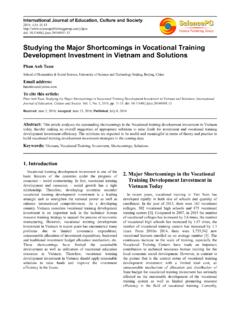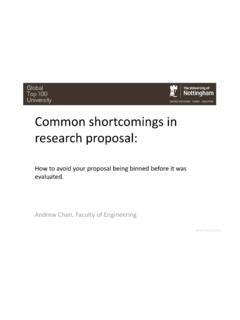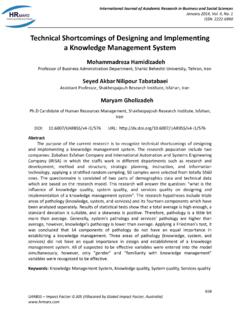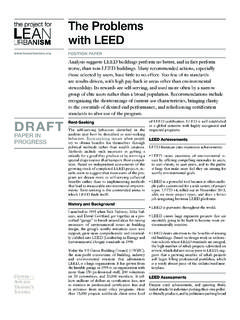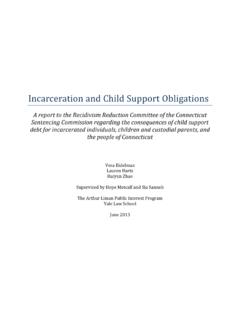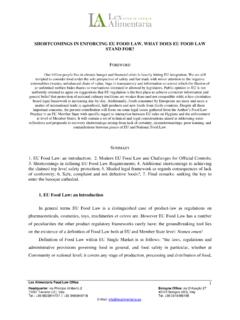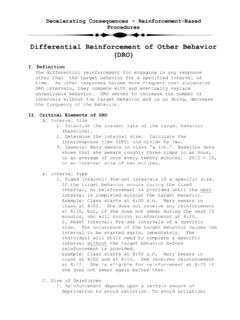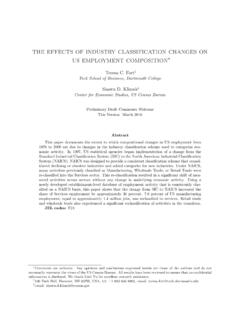Transcription of Strategic Environmental and pollution prevention. The term ...
1 1 | P a g e Strategic Environmental Assessment Introduction Strategic Environmental Assessment (SEA) is a set of analytical and participatory processes for incorporating Environmental considerations, at early stages of decision making, into policies, plans, and programs that affect natural resources. SEA evaluates, at the highest Strategic level, a project s Environmental impacts in the context of social and economic factors. This extends traditional Environmental Impact Assessments (EIA), which focus solely on physical Environmental impacts.
2 SEA fosters and provides critical systematic considerations This guidance note was prepared by Fernando Loayza (Senior Environmental Economist, ENV). Peer reviewers included Bryan Land (Senior Petroleum Specialist, SEGOM), Diji Behr (Natural Resource Economist, ARD), John Middleton (Principal Environmental Specialist, CESI), Ernesto Sanzhez-Triana (Lead Environmental Specialist, SASDI). Additional comments and contributions were provided by Anjali Acharya (Senior Environmental Specialist, LCSEN), Gary McMahon (Senior Mining Specialist, COCPO), Hanneke van Tilburg (Senior Counsel, LEGES), Harvey van Veldhuizen (Lead Environmental Specialist, OPCQC), Horacio Terraza (IADB), Jim Listorti (Consultant, FEU), Lakhdeep Babra (Principal Environmental Specialist, CESI), Mauricio Athie (Senior Environmental Specialist, CESI), Nicholas Bauer (Consultant, CES), Nicole Maywah (consultant, SASDI)
3 , Pete Kolsky (Senior Water and Sanitation Specialist, ETWWA), Robert Gerrits (Social Development Specialist, CESI), Sachiko Morita (Counsel, LEGEN), and Yewande Awe (Senior Environmental Engineer, ENV). Editorial assistance was provided by Stan Wanat (Consultant), Juliette Guantai (Program Assistant, ENV) and James Cantrell (Communication Analyst, ENV). The task team leaders for this product are Kulsum Ahmed (Lead Environment Specialist, ENV) and Helena Naber ( Environmental Economist, ENV). The product was prepared under the guidance of the following World Bank Group management: James Warren Evans / Mary Barton-Dock (Directors, Environment Department, World Bank), Bilal Rahill (Senior Manager, IFC), and Frank Lysy / Ravi Vish (Director, MIGA).
4 At the sectoral, regional, and national levels to promote Environmental sustainability, smart growth, and pollution prevention. The term SEA encompasses a spectrum of analytical processes such as Strategic Environmental and Social Assessment (SESA), Strategic Social Environmental Assessment (SSEA), Country Environmental Analysis (CEA), Combined Strategic Impact Assessment (CSIA), and Cumulative Impact Assessment (CIA). Description and Application of Strategic Environmental Assessment Strategic Environmental Assessment is not a fixed, single and prescriptive approach (OECD 2006, 17).
5 It refers to a family of approaches that use a variety of tools, such as fiscal incentives, land use plans, and sustainable development policy. The one size fits all approach is not applicable to SEA. Effective SEAs adapt to fit the context and conditions of the project. They must incorporate the cumulative Environmental impact of multiple simultaneous projects proposed by a development plan. Developing a successful SEA requires resourceful and proactive behavior to seize opportunities for influencing policy. Incorporating Environmental sustainability considerations into a project is an ongoing process.
6 Ideally, this process should start at the earliest phase of project formulation, extend through the implementation phase, and conclude only after full monitoring of the complete project has been achieved, as seen in box 1. To accommodate these developments, it is crucial to maintain an open dialogue through every stage of a project. 2 | P a g e The two distinct approaches to an effective SEA are impact-centered and institution-centered. The context of the development goal determines which approach is most appropriate.
7 Impact-centered SEA approach. An impact-centered SEA approach focuses on the physical and human impacts of a proposed development plan. Physical impacts include infrastructure projects and land-use change. Human impacts include promoting economic growth or health and safety. For an impact-centered SEA approach, the decision-making criteria focus on incentive systems and institutions conducive to attract investment, encourage savings or consumption, and promote exports. A critical component of an Environmental assessment is to properly analyze the environment to optimally manage growth at a sustainable rate.
8 Institution-centered SEA approach. An institution-centered SEA approach focuses on a project s managing body. Techniques from Environmental economics, policy economics, institutional management, political science, and sociology are appropriate for this form of SEA. An effective institution-centered SEA highlights the proper management techniques to sustainably implement a development project. Combined SEA approach. A comprehensive SEA will include strategy from both the impact-centered SEA approach and the institution-centered SEA approach.
9 Project conditions will determine which methodology is most pertinent. For example, an SEA for a hydroelectric power plant will be developed using an impact-centered approach. It will focus on the Environmental impact of the proposed construction Box 1. Strategic Social Environmental Assessment (SSEA) of the Power Sector in the Nile River Basin Uganda and the rest of the Nile Equatorial Lakes (NEL) Region of Eastern Africa have experienced an acute lack of electric power. Additional low-cost power generation and an efficient regional electricity trade are development priorities.
10 The World Bank supported the preparation of a Strategic Social Environmental Assessment (SSEA) of major regional power development options and regional transmission interconnections in the NEL Region. The assessment, which covers Burundi, the eastern region of the Democratic Republic of Congo, Rwanda, Kenya, Tanzania, and Uganda, proposed a power development strategy and an indicative development plan to the year 2020. Bujagali Falls on the upper Victoria Nile in Uganda has long been considered for hydropower development, and in the SSEA analysis emerged as the highest development priority for Uganda.










